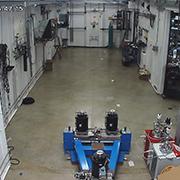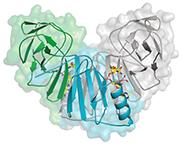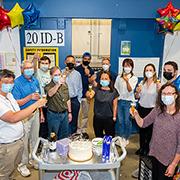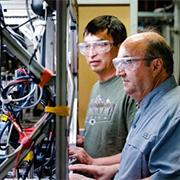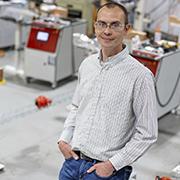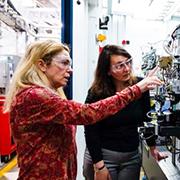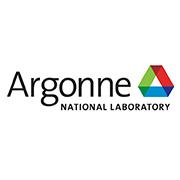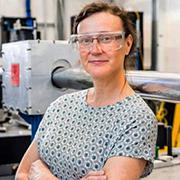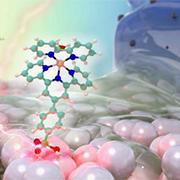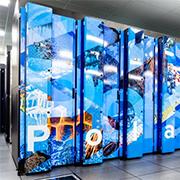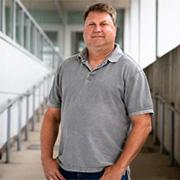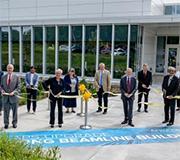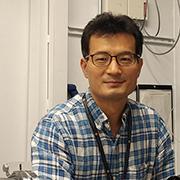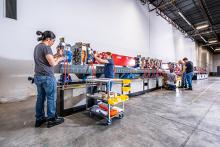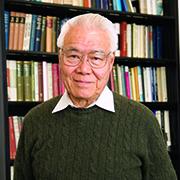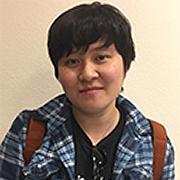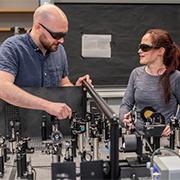News Feed - APS/User News
The upgrade of the Advanced Photon Source is under way. And there’s no surer sign of that than construction actually happening at the facility. The project’s feature beamlines are starting to take shape, and the latest to begin its transformation is located at Sector 8.
Research into the monkeypox virus is in its early stages at the Advanced Photon Source, but studies on other pox viruses may offer some insight into this family of diseases, insight that might help in the fight against the current outbreak.
For more than 25 years, scientists hoping to make use of cutting-edge technology for x-ray spectroscopy have come to Sector 20 of the APS. Now the 20-ID beamline is transforming into the High Energy X-ray Microscope, one of the feature beamlines under construction as part of the APS Upgrade Project. The spectroscopy program will move to a new beamline, 25-ID, which will offer enhanced and improved scientific tools for users.
A year ago, scientists got their first look at material gathered from nearby asteroid 162173 Ryugu. Now the results of those studies, including those at the APS, have been revealed, and they shed light on the history of our solar system and the long trek of this cosmic wanderer.
There’s something challenging and inspiring about following up a perfect 25-plus-year record. Just ask John Zientek, a vacuum engineering specialist working on the new vacuum system for the upgrade of the Advanced Photon Source.
A group of control system developers from NASA’s Glenn Research Center Armstrong Test Facility visited the Advanced Photon Source on September 9, 2022. The purpose of this field trip was to see a live demonstration of the Experimental Physics and Industrial Control System (EPICS).
Researchers have enlisted the U.S. Department of Energy’s Advanced Photon Source to answer the question: When is a book not a book? What they find might end up rewriting a chapter of modern art history and might shine new light on one of the pioneers of an artistic movement.
Two members of the Advanced Photon Source Engineering Support Division and a member of the Infrastructure Services Division who is assigned to the APS are among the Argonne employees throughout the Lab who received Argonne National Laboratory Board of Governors Awards for Outstanding Safety Performance.
As part of an upgrade to the Advanced Photon Source, scientists studying the “chemical map” of samples will have better proximity to colleagues, improved research tools and state-of-the-art facilities.
The U.S. Department of Energy’s Advanced Materials for Energy-Water Systems Center has been renewed for another four years and will continue providing pivotal discoveries related to advanced materials underpinning future solutions to water crises. Planned experiments could be among the first to leverage the new capabilities available when the upgrade of the Advanced Photon Source comes online.
Polaris, the newest supercomputer at the U.S. Department of Energy’s Argonne National Laboratory, is now open to the research community. It will be a key tool for integrating Argonne Leadership Computing Facility computing resources more closely with DOE experimental facilities such as the Advanced Photon Source and Center for Nanoscale Materials.
The Resonant Inelastic X-ray Scattering program at the Advanced Photon Source is now running experiments using an enhanced spectrometer and high-resolution monochromator at beamline 27-ID. The new capabilities went online in March 2022, making 27-ID the first available beamline enhancement funded by the APS Upgrade Project.
See the short Argonne video of U.S. Department of Energy Secretary Jennifer M. Granholm’s visit to the ribbon cutting ceremony for the Long Beamline Building, which will be home to two of the new x-ray beamlines that are part of the upgrade of the Advanced Photon Source.
Starting in April 2023, Mark Erdmann will oversee the effort to replace the current Advanced Photon Source storage ring with a brand new model, one that will be carefully transported and installed in sections.
Earlier today, U.S. Secretary of Energy Jennifer Granholm and several Illinois leaders cut a ceremonial ribbon to mark the completion of a new facility that will host new experiments at the Advanced Photon Source that will contribute to the future of electric vehicles, quantum computers and resilient materials for all kinds of uses.
Sungsik Lee of the U.S. Department of Energy’s Advanced Photon Source and colleagues have been awarded the 2022 Faraday Division Horizon Prize by the Royal Society of Chemistry for the development of single-atom alloys, a new class of catalysts that play a prominent role in the energy and sustainability fields.
After years of planning and design work, the team upgrading the Advanced Photon Source is now preparing to make those plans and designs a reality.
Lee Chang-Li Teng, a theoretical physicist who contributed to and designed many particle-accelerator-based projects around the globe, passed away peacefully in hospice care on Friday, June 24, 2022. He was 95.
Yanqi (Grace) Luo, a postdoc in the X-ray Science Division at the Advanced Photon Source has been awarded the 2022 Werner Meyer-Ilse Memorial Award by the 2022 International Conference on X-ray Microscopy.
How would you like to work at Argonne National Laboratory’s Advanced Photon Source? Sounds like something from the distant future, right? But it’s as current and real as the work University of Rhode Island doctoral student Cali Antolini is doing as part of the U.S. Department of Energy’s Office of Graduate Student Research Program.

